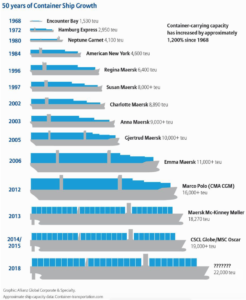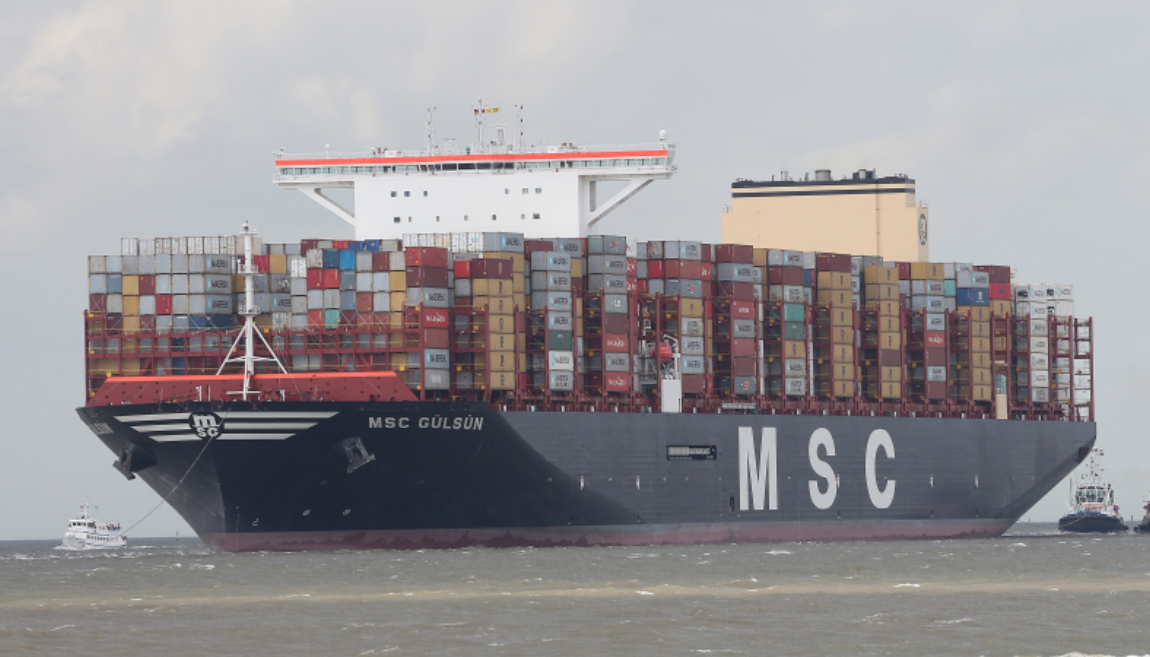MSC Gülsün- The World’s Largest Container Ship
It seems that we are constantly receiving updates on the latest “world’s largest container ship” but it must be said that the decision of Switzerland based Mediterranean Shipping Company’s (MSC) to invest in a new class of mega Ultra Large container Ships (ULCS) is really pushing the boundaries. With 24 rows of containers, the intended class of 11 vessels sets a significant new container crane challenge for terminals.
As with the majority of ULCS, the vessels are set for operations between the Far East and North-Western Europe via the Suez Canal as part of the AE10/SILK service within the 2M Alliance with Maersk Line. At 61.5m in beam she is pressing against the Suez Canal’s maximum allowable beam of 62.1m
Built by Samsung Heavy Industries Geoje Shipyard, South Korea in 2019
Owned and operated by MSC
LOA 399.9m
Beam 61.5m
Draft 16m
GRT 197,500 tons
DWT 224,986 MT
Capacity 23,756 TEU
As with all modern container ships, MSC Gülsün is designed with efficiency, environmental protection and safety in mind. Ship owners are fully conscious of the need to do their part in meeting the 2030 emission improvement targets set by the International Maritime Organization (IMO). In the short term, and in order to prepare for compliance with the new IMO January 1 2020 fuel standards, the vessel is equipped with an approved hybrid scrubber and has the option of switching to low-sulphur fuel or to be adapted for liquified natural gas (LNG) fuelled propulsion in the future.
MSC Gülsün and her sisters are also designed to meet the next steps in digital shipping by enabling expedited ship to shore data transmission and connection for smart containers.
SHI will deliver six of the new class of ships, while SHI’s compatriot shipbuilder Daewoo Shipbuilding & Marine Engineering (DSME) is constructing the other five vessels.
It was only 13 years ago in 2006 that we were marvelling at the entry into service of Emma Maersk, with a new record capacity of 14,770 TEU in capacity. At 3m shorter than the MSC Gülsün and with 21 rows across, that class of container ships was designed with a single island with a consequent lower allowable deck cargo height profile. Thanks to improved container handling capacity and efficiency, it is estimated that MSC Gülsün will require only four additional days of port time per rotation compared to Emma Maersk. The contribution of the container industry in facilitating continuing growth in world trade with minimal environmental impact is a tremendous achievement of innovation.


